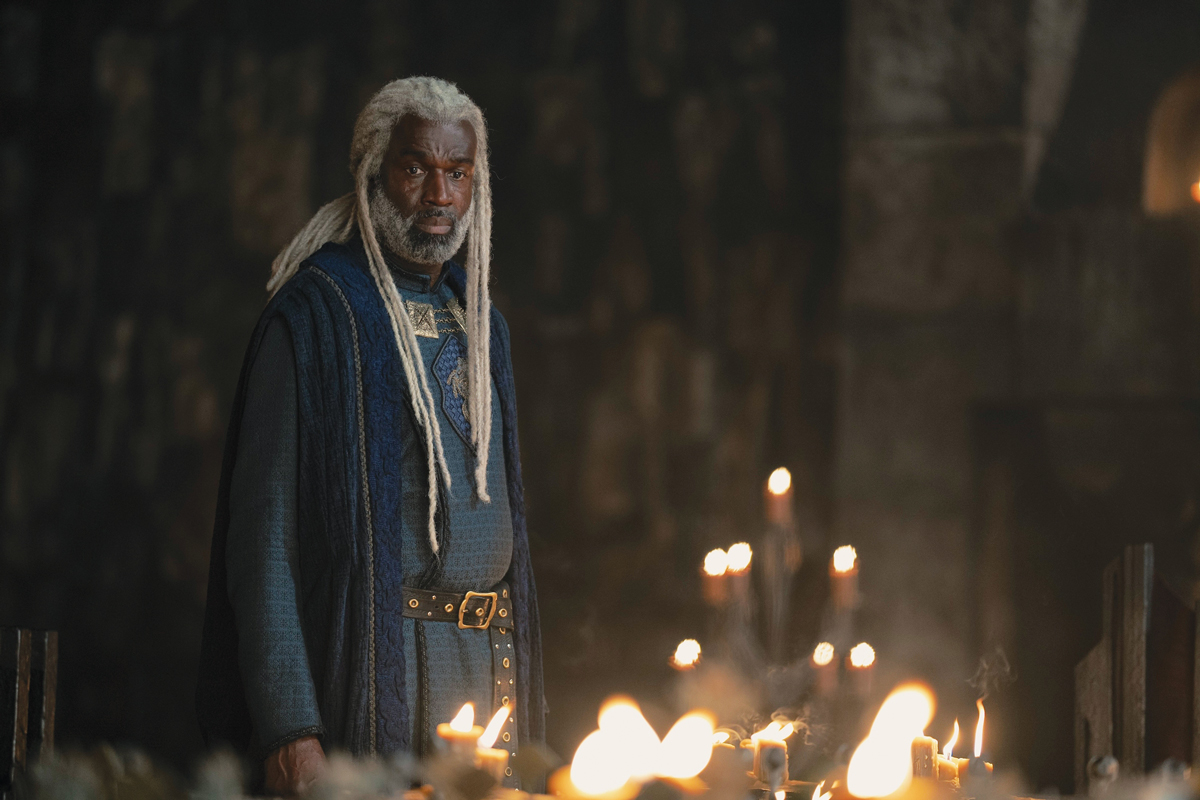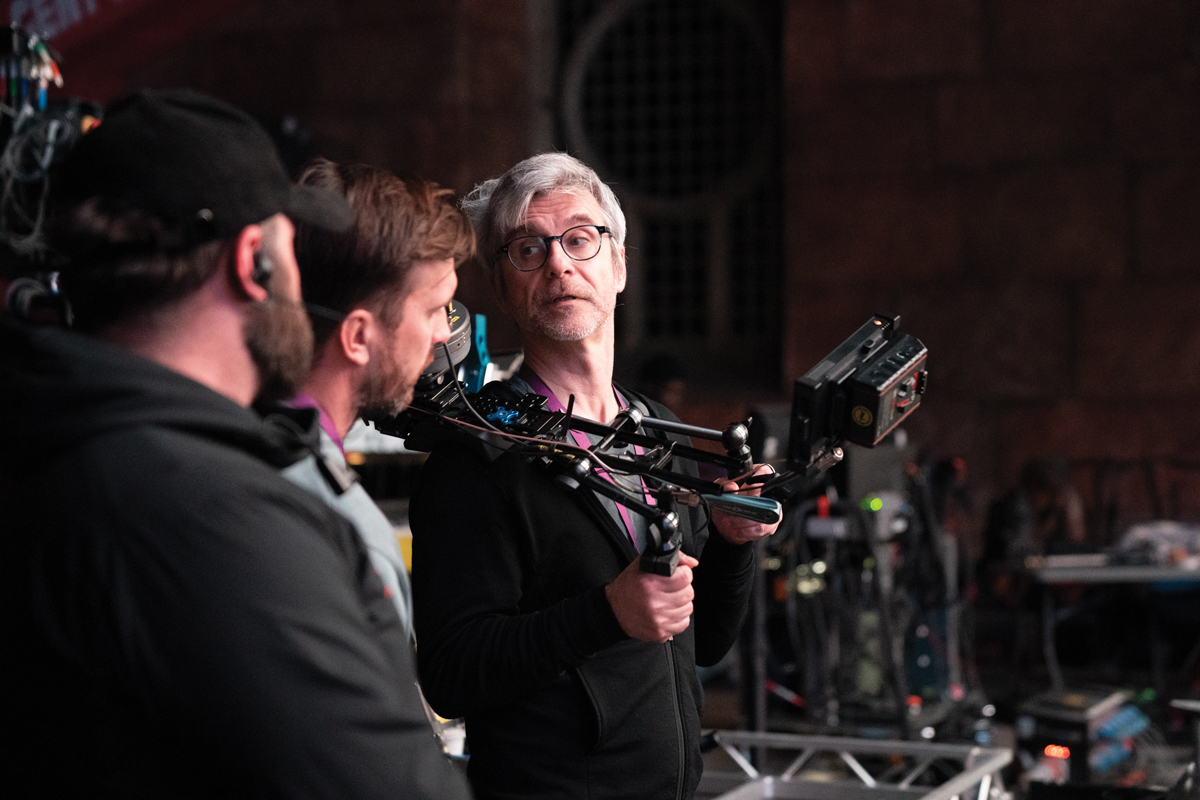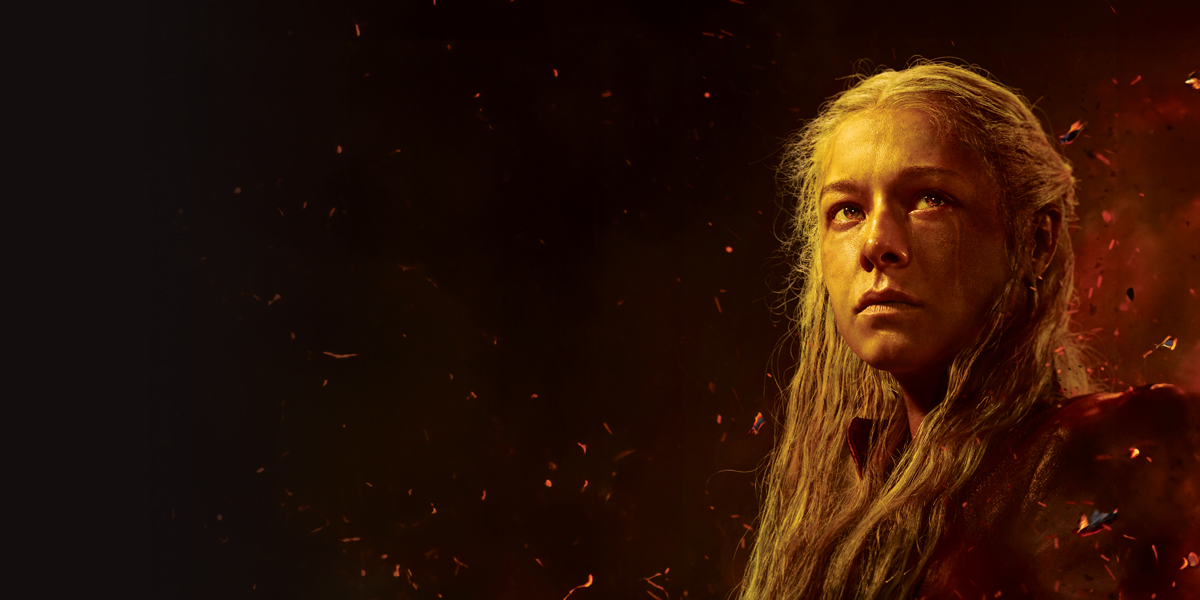
Dragon tales: House of the Dragon
Posted on Sep 3, 2024 by Katie Kasperson
DOP Vanja Cernjul gets immersed in House of the Dragon, explaining the intricacies involved with a series of such scope
WORDS Katie Kasperson
Now in its second season, Game of Thrones prequel House of the Dragon follows the dramatic fall of House Targaryen as the family fights over King Viserys I’s rightful successor. “This whole season is about the start of the big civil war, the so-called Dance of the Dragons,” begins Vanja Cernjul, DOP on episodes 6 and 7 of Season 2. “There are some epic battles, and it seems like it’s much bigger than Season 1 in terms of both the story and scope,” he claims.
In his words, likely the ‘last person on Earth’ who hadn’t seen Game of Thrones, Cernjul came to the project with ‘a lot of catching up to do’. As a longtime friend of episode 6 director Andrij Parekh, Cernjul says he jumped at the opportunity to shoot on the show. “Being part of the worldbuilding process is something that I enjoy a lot – trying to find the logic of the world and how we can contribute to that logic as cinematographers,” he shares.
Weather woes
Set approximately two centuries before Game of Thrones, House of the Dragon exists in a somewhat less-developed Westeros but features many of the same locations – including King’s Landing and Dragonstone, where King Aegon II and Queen Rhaenyra are based respectively. The King’s Landing sequences were shot in Spain, while Dragonstone is made up of various north Wales locations.
“That was one of the wonderful things about the original series – all these locations they went to,” argues Cernjul, while the pandemic restricted location-based production on Season 1 of House of the Dragon. “We spent far more time on location,” he says of Season 2. “You can see it.” While filming on location can produce a greater sense of realism, there are obvious challenges too, like sticking to a schedule, shooting with a condensed crew and adapting to unexpected weather.
Cernjul shot episode 7’s opening sequence on a beach in the Isle of Anglesey. “Director Loni Peristere and I worked closely with the first AD, Toby Ford, in scheduling shots so we got the best light,” he recalls. “We came up with a solid plan, where we grouped shots according to the sun’s position. Then we discovered there were huge tidal changes. That added more complexity because not only did we have to be in a certain place according to where the sun was, but we also had to react to what the tide was doing,” he explains. “It became this complicated chart.”
Ultimately, the sun’s position didn’t matter much as the weather that day was rainy and foggy (“Of course, right?” he laughs). But the show’s rigid schedule didn’t allow for changes, forcing Cernjul and his crew to press ahead. “When we showed up on the beach in the morning, we realised that it was the best possible weather for the scene.
“Sometimes, all the planning you do just goes out the window, and you have to embrace what’s in front of you,” Cernjul continues. “We’re glad we did because it works for the scene. It looks like we were waiting for that weather.”
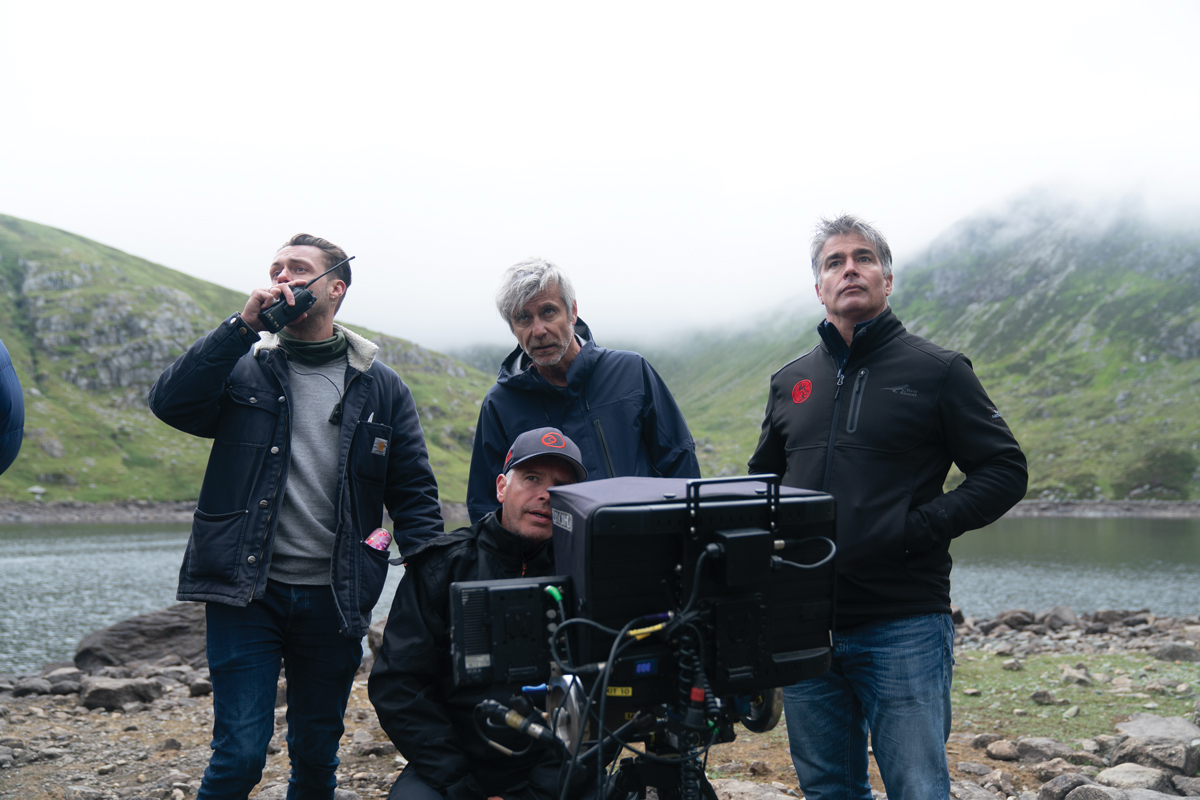
Castles and caves
House of the Dragon firstly gets its larger-than-life feel from its epic story, though physical sets also play a major part in establishing the show’s realism. From a ‘fully functional’ castle set to a constructed ship, this season’s builds are ‘magnificent’, beams Cernjul. “It was like working on Ben-Hur or Cleopatra.”
While Season 2’s sets were scaled up from Season 1, there are limitations when making a fantasy series; namely, the dragons – a necessary component of a show titled House of the Dragon – are mammoth creatures that wouldn’t realistically fit on a studio stage. “One massive scene took place in the cave where the dragons live,” recounts Cernjul. “Dragonseeds are being led to this cave so the dragons can choose potential new dragonriders. Such a massive cave obviously couldn’t be built, so it had to be done on a green screen.”
Not only did the scene warrant a virtual background, but it also combined pyrotechnic stunts with invisible dragons, which are added in post. In other words, filming this sequence required a serious stretch of the imagination. “One of the big challenges was figuring out scale. It was a large stage, but you had to imagine it was ten times the size – and there were also these enormous creatures inside,” he says. “If the dragon turns, how quickly does the dragon’s tail go through this cave? It was something we had to visualise because, of course, there was no dragon and no cave.”
Besides having a thorough prep process, the cast and crew developed some creative solutions while filming. First of all, “the visual effects department had a blue dragon head that the puppeteers were moving around, so we would have some idea of where the dragon was in space,” recalls Cernjul. Then, Peristere employed an audio system called the Voice of God to describe the dragon’s movements ‘in real time’. “Sometimes, he would turn into the dragon; he would start breathing like the dragon to help the actors visualise what was supposed to be happening in front of them,” Cernjul laughs. “That was very effective.”
In the same sequence, the dragon breathes fire onto 12 people at once. “We did that practically; we did as much practically as possible,” explains Cernjul. “When you see people actually on fire, it’s very uncomfortable, even when you know that it’s in a completely controlled environment. As you could imagine, you can’t keep repeating this. That scene had to be well planned – not only for visual effects, but also for the stunt people.”
To film this scene as efficiently as possible, Cernjul and Peristere planned everything down to the smallest detail. What began as a shot list became a storyboard and then a previs made by the visual effects department. “You have to be mindful of the resources and you want to be as economical as possible. With visual effects, it doesn’t matter how much money you have because, if you run out of time, there is no budget that can help you,” he concludes.
Soaring, flying
Cernjul and the directors wanted the series to maintain a visual subjectivity, as House of the Dragon is a character-driven family drama at its core. They achieved an immersive storytelling style both through camera and lens choice (ARRI Rental’s ALEXA 35 and ALFA anamorphics, primarily) and composition, particularly when the characters were riding their dragons.
The team developed a filming style for these sequences that made it look “almost like there’s a camera operator on the dragon filming handheld,” Cernjul continues. He claims this would have been impossible to do practically. “First, there was no room, but also it wouldn’t be safe.” The actors sit atop a device called a buck (imagine a mechanical bull, but ‘far more complicated’) that simulates the dragon’s movements while the camera is controlled via remote head.
“Achieving that,” according to Cernjul, “involved integrating handheld camera movements into a motion-control system which was coordinated with the buck. In my testing, I saw that the operators’ cameras were too stable – after a while, the whole thing started looking disconnected.” Forced to find a creative fix, Cernjul first had the operator stand on their toes. “That was interesting, but you can’t ask an operator to do that for the duration of the scene!” he says. Eventually, he introduced half-balance exercise balls to help the operators find the correct level of unsteady movement without causing too much physical strain. “It was a simple solution that worked. The operators were game to try anything.”
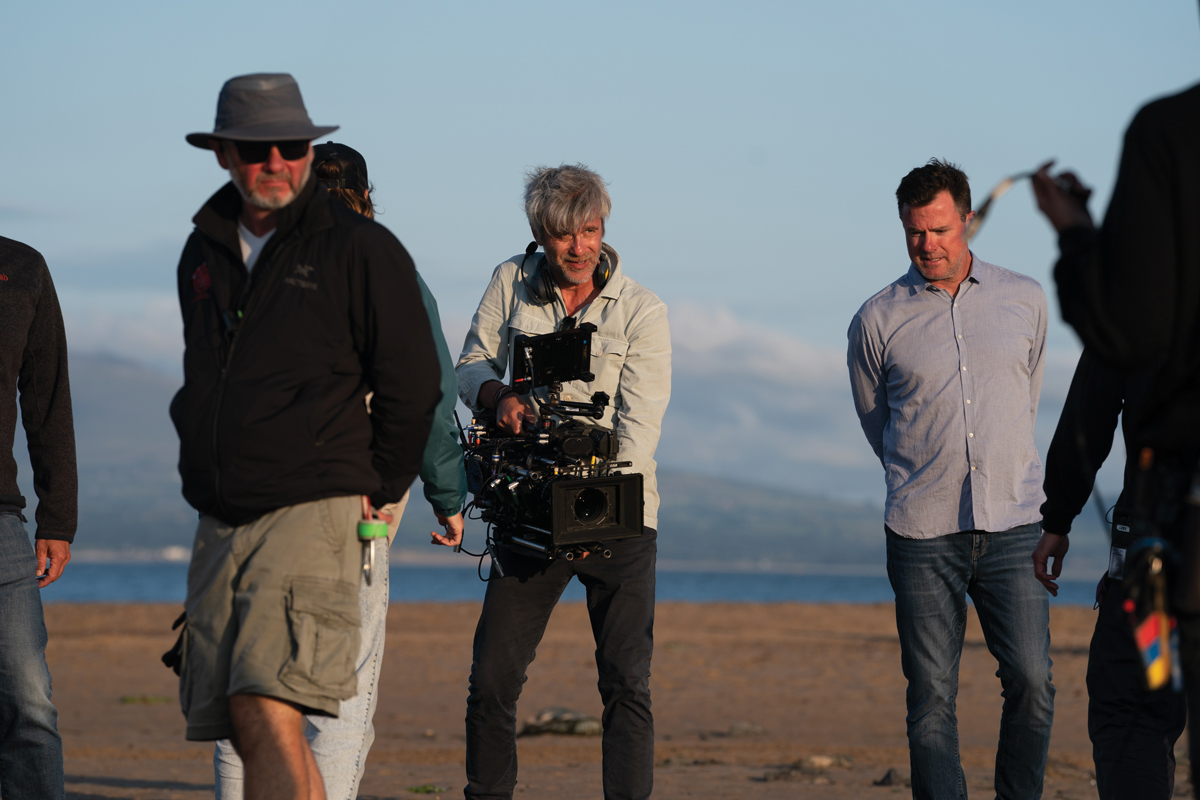
Lofty logistics
Cernjul worked with two directors – the only Season 2 DOP to do so. This meant that, occasionally, he would be double-booked, slated to shoot multiple scenes in the same place, at the same time. “It was impossible of course,” he says, but had to be done, so he asked fellow DOP Alejandro Martínez to help.
“We had two scenes on the beaches of Anglesey that took place at dusk, and anybody who has ever shot a scene at dusk knows that there’s a seriously short window,” describes Cernjul. His scene, which appears in episode 7, shows a group of dragonseeds sneaking out of King’s Landing and heading towards Dragonstone. “It was important that the scene takes place at dusk – this was a crucial story point and we simply had to make it work,” he insists.
On a nearby beach, Martínez shot the dusk sequence for episode 6. “We were so close that we could see each other,” recalls Cernjul. “It was incredible to watch these two difficult scenes being filmed simultaneously at the same location. That was an amazing experience.”
Cernjul describes the shooting schedule as ‘a work of art’ and ‘incredibly logistically complicated’. “To be honest, it was intimidating,” he admits, “and there was no room for error. But, somehow, we pulled it off.”
House of the Dragon is now streaming on Sky TV/Now Entertainment in the UK and Max in the US.
This feature was first published in the September 2024 issue of Definition.


